If you are outfitting a home gym and rowing machines are on your radar, the water rower often stands out - not just for performance but for experience. The water rower offers a distinct feeling of rowing on water, a calming swoosh with each pull, and resistance that scales naturally with effort. For people who value both function and form, it offers a compelling blend of workout potential and sensory appeal.
In this article I will walk you through exactly why one might choose a water rower: how it works, what advantages it brings, what challenges to expect, and who benefits most. We will compare it to magnetic and air rowers, list key features to evaluate, name some standout models, and even offer sample workouts. Along the way, you’ll find maintenance tips, insights into the mind-body rhythm of rowing, and guidance on matching a rower to your home gym setup. Whether you are a fitness enthusiast, home gym builder, or someone intrigued by beautiful, immersive equipment, this guide will help you decide whether a water rower is the right choice for your home.
How Water Rowers Work
A water rower uses a tank filled with water and internal paddles or blades. When you pull the handle, the paddles move through the water, creating resistance. The faster you pull, the more water you displace, and the heavier the stroke feels. This setup relies on basic fluid dynamics — doubling your speed can increase resistance by a cubic factor.
Unlike magnetic systems, there's no mechanical friction; resistance is natural and continuous. Some water rowers allow you to adjust the base resistance by changing the water level - more water makes the default strokes heavier; less water makes them lighter.
Because you are pushing through a fluid medium, the stroke feels smoother and more forgiving. This design gives water rowers a signature “fluid draw” that many users say closely replicates on-water rowing, which appeals greatly to former outdoor rowers or purists.
Top Benefits of a Water Rower
Realistic rowing experience
One of the strongest selling points is the natural, “on-water” feel. This can make workouts more enjoyable, especially for those who love outdoor rowing. Many enthusiasts say that the stroke feel is closer than magnetic or air alternatives.
Smooth, continuous resistance
Because the resistance comes from the fluid, there is no abrupt shift or mechanical friction. The stroke is continuous and even, which is kinder to joints and flows with your rhythm.
Therapeutic, meditative sound
That gentle swoosh of water as you row is not just aesthetic - many users find it calming, akin to being near water. This sensory feedback can enhance consistency and mental focus.
Full-body workout & calorie burn
Rowing engages roughly 80-85% of your musculature in a single stroke cycle: legs, core, back, arms. Healthline outlines how rowing is a full-body cardio mode that builds strength and endurance simultaneously.
Low-impact on joints
Unlike running or other high-impact cardio, rowing is gentle on knees, hips, and ankles. The rowing motion keeps joints safe while still delivering serious cardiovascular and muscular workload.
 Common Drawbacks & Challenges
Common Drawbacks & Challenges
Size and footprint demands
Water rowers tend to be longer and heavier than magnetic or compact machines. You’ll need space to row and to store. Some models allow upright storage, but that often requires height clearance.
Water maintenance and treatment
You must treat the water periodically (chlorine tablets or water purifiers) to deter algae, bacteria, and odour. You also need to top up water occasionally and check seals.
Higher initial cost
Water rowers often come with a premium price tag, reflecting their complex build, aesthetics, and fluid mechanics.
Noise and splash concerns
While not harsh noise like fans, water rowers emit water movement and splash. In quiet apartments, this might be noticeable. Proper design helps minimise splash, but it's a factor to test in your environment.
Storage / vertical stand issues
Not all models stand upright. If yours does, check that floor and ceiling space permit it. Also ensure safe securing so the tank does not shift or leak.
Who Gets the Most from a Water Rower?
A water rower is especially appealing if:
- You are an experienced rower or love the feel of outdoor rowing
- You want an immersive, sensory workout - the swoosh and feel matter
- You value aesthetic design - many water rowers look elegant in a home gym
- You have enough space and are willing to manage maintenance
- You prefer technique over numeric output - while water rowers can display metrics, the experience is more about rhythm
Beginners can use water rowers too, but they may prefer magnetic options first because they tend to be simpler, require less maintenance, and have lower noise options.
Water vs Other Resistance Types
Water vs Magnetic
Magnetic rowers offer extremely quiet operation, minimal maintenance, and precise resistance increments. Water rowers, by contrast, offer a more organic feel but require upkeep. Garage Gym Reviews emphasises that magnetic rowers take care of themselves more. Yosuda compares both by noting magnetic models are more compact and lower maintenance.
Water vs Air
Air rowers also use fluid resistance, but via fan blades. As speed increases, resistance grows. Water rowers tend to feel quieter and smoother than air models, and they have more natural feedback. Fitness Town explains how water rowers increase drag by displacement of water, which is more gradual and organic.
Hybrid & crossover machines
Some rowers combine water and magnetic or air resistance. These hybrids attempt to balance a quiet drive with fluid feel, giving a middle ground for users wanting both performance and maintenance ease.
Key Features to Evaluate
When selecting a water rower, evaluate:
- Tank capacity & blade design - larger tanks and well-designed paddles enhance realism
- Frame strength & material - high-grade wood or steel frames offer longevity
- Displays & programming - clear metrics (time, distance, stroke rate) aid training
- Noise control & splash guards - look for sealed or splash-minimised designs
- Storage / vertical stand options - helpful for flats or compact gyms
Best Water Rowers to Consider
Premium water rowers often include high-end build, sealed tanks, vibration dampening and upright stands. Mid-level and entry-level options still offer the fluid feel at more affordable cost. Before purchase, check for UK availability, warranty, spare parts, and support. Many products currently promote “water rower vertical storage” to help with footprint concerns. At JLL Fitness we offer a range of premium water rowers, view our products here.
Maintenance & Care for Water Rowers
- Add water purification tablets monthly
- Change water annually or when cloudy
- Check and lubricate seals and o‑rings
- Wipe tank rims and inspect for leaks
- Store in stable temperature zones - avoid freezing
- When folding or moving, support the tank properly
Performing consistent care ensures longevity and preserves performance.
Sample Workouts on a Water Rower
- Base steady state: 20–30 minutes at moderate pace
- Intervals: 1 min high / 1 min rest × 10–15 rounds
- Distance trial: 5K time trial to benchmark
- Mixed circuit: 500 m row + push-ups + kettlebell swings, repeat
These help you experience the fluid resistance and adapt to the water rower’s feel.
Unique Insight: The Rhythm & Mind Connection
One less‑spoken advantage is how water rowers encourage rhythmic consistency. The swooshing sound acts as biofeedback - when your stroke is smooth, it sounds cleaner; when jittery, the water reacts. This helps you self-correct rhythm without needing metrics. Many users describe entering a flow state more easily on water rowers - they become not just cardio machines, but mindfulness tools.
Quick Takeaways / Key Points
- Water rowers deliver one of the most realistic rowing experiences thanks to fluid resistance
- Their smooth, continuous feel is gentler on joints than many alternatives
- The sound of water offers meditative and sensory feedback
- Drawbacks include size, water maintenance, cost, and splash
- Comparing water with magnetic and air types reveals trade-offs between feel, noise and upkeep
- Evaluate tank design, frame, display, noise control, and storage options
- Care routines and proper maintenance are essential
- Water rowers suit users who prioritise experience, feel, and aesthetic - not just metrics
Conclusion
Choosing a water rower is a decision that blends function with emotion. For many, it is not just about strokes or watts, but about connection - the sound, the feel, the flow. While it comes with some maintenance and requires more space, those who value immersion, realism and elegant design will find it deeply rewarding.
If you value a cardio machine that offers strong physical benefits and a beautiful experience, the water rower deserves serious consideration. Prioritise build quality, support, and spare parts when shopping. Start with modest sessions and listen to your body as you adapt.
If you want help selecting a water rower model that matches your home gym, or want help comparing it with magnetic or hybrid options - I can help with that too. Explore models, test strokes, and pick one that draws you in every time.
FAQs
-
Is a water rower quieter than an air rower?
Generally yes - water rowers produce a gentle swooshing sound, while air rowers use fans that can be louder. Many users find water resistance more soothing. -
Do I need to change the water in the tank regularly?
Yes - you should treat the water monthly and change or purify it annually or when it becomes cloudy to maintain performance and prevent algae. -
Can beginners use a water rower?
Absolutely. Beginners benefit from the smooth resistance and consistent feedback. However, they should focus first on technique before pushing intensity. -
How should I adjust a water rower’s resistance?
Resistance is mainly determined by how hard and fast you row. You can also tweak base feel by adjusting the water level in the tank. -
Does a water rower take more space than other rowers?
Yes, often. Water rowers tend to be larger and heavier, with less foldability. Ensure you have enough length and any vertical clearance if you store it upright.

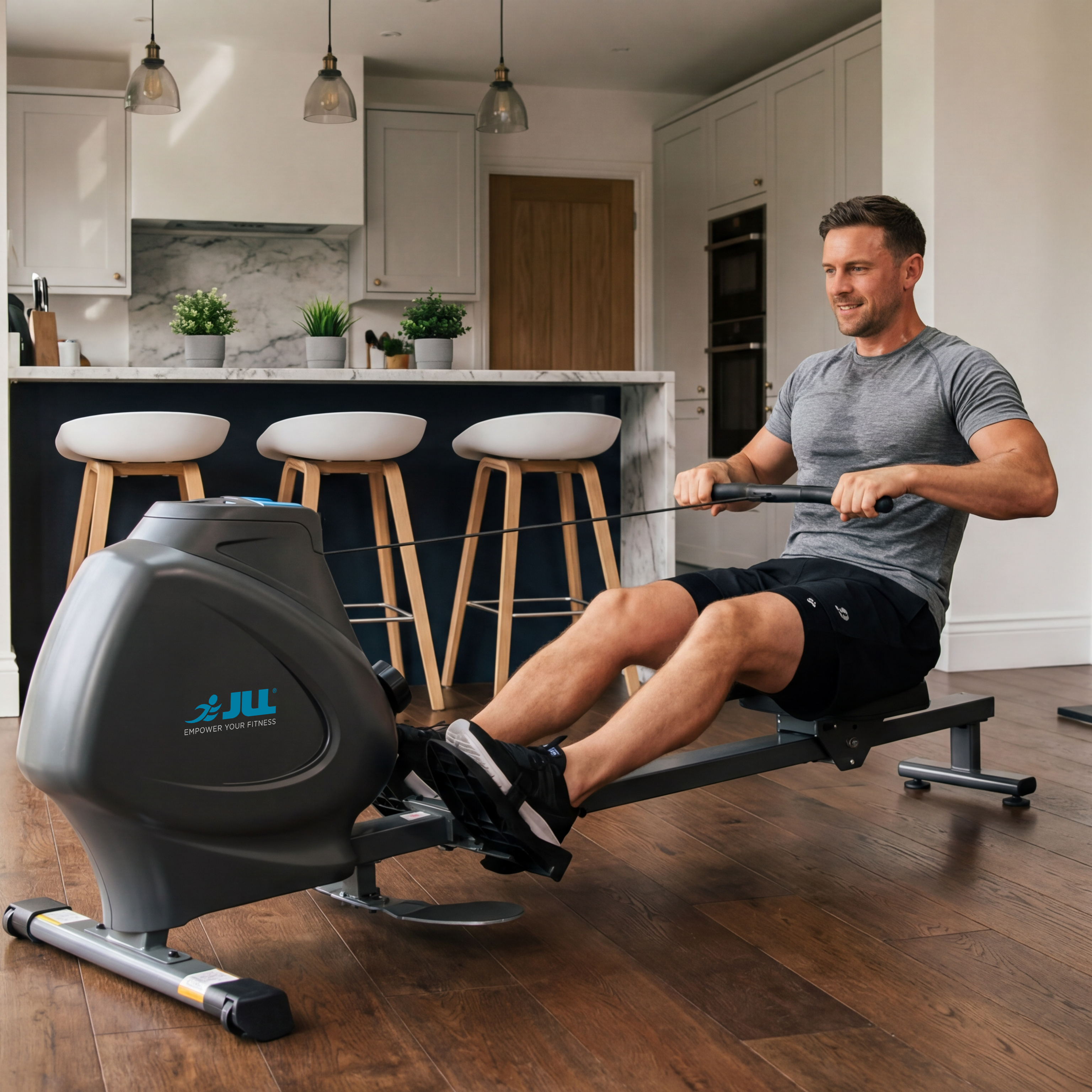
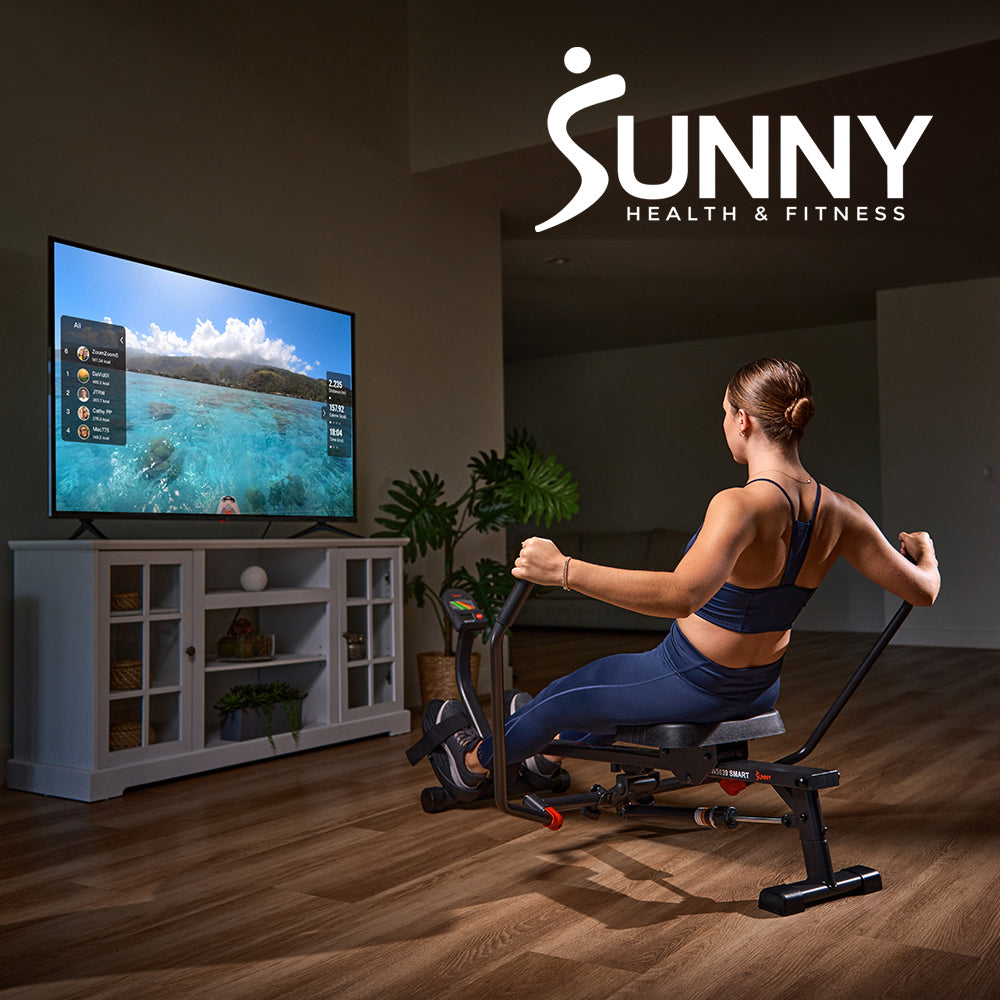
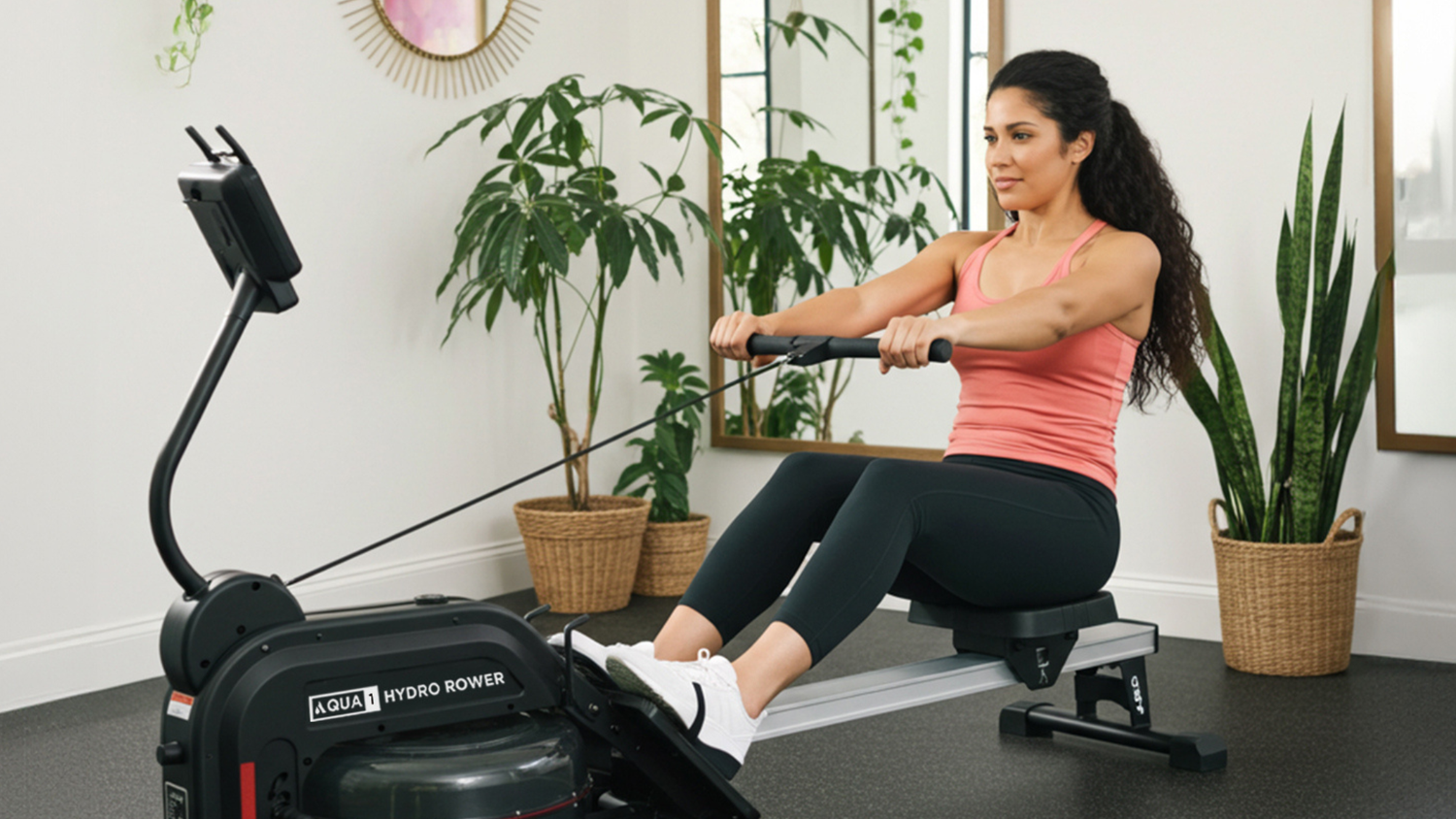
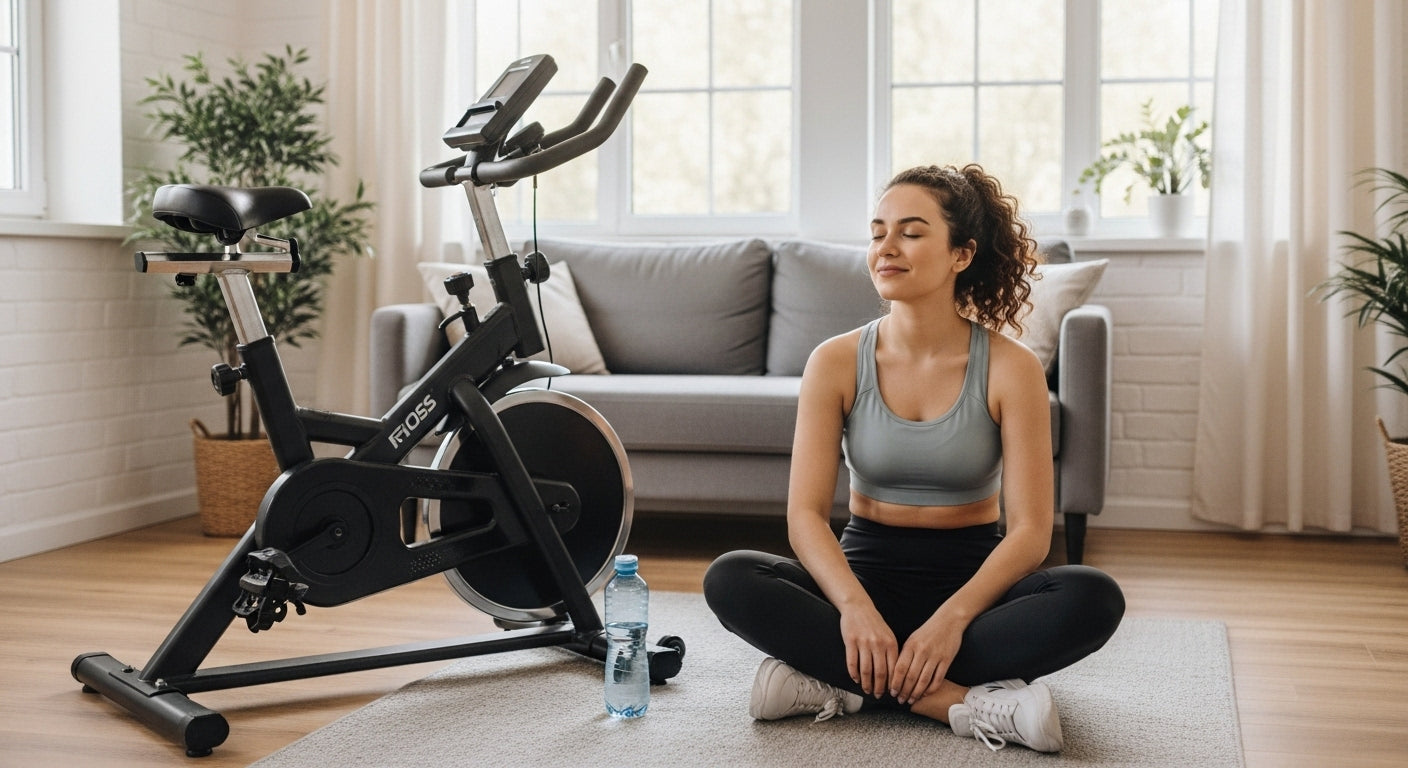
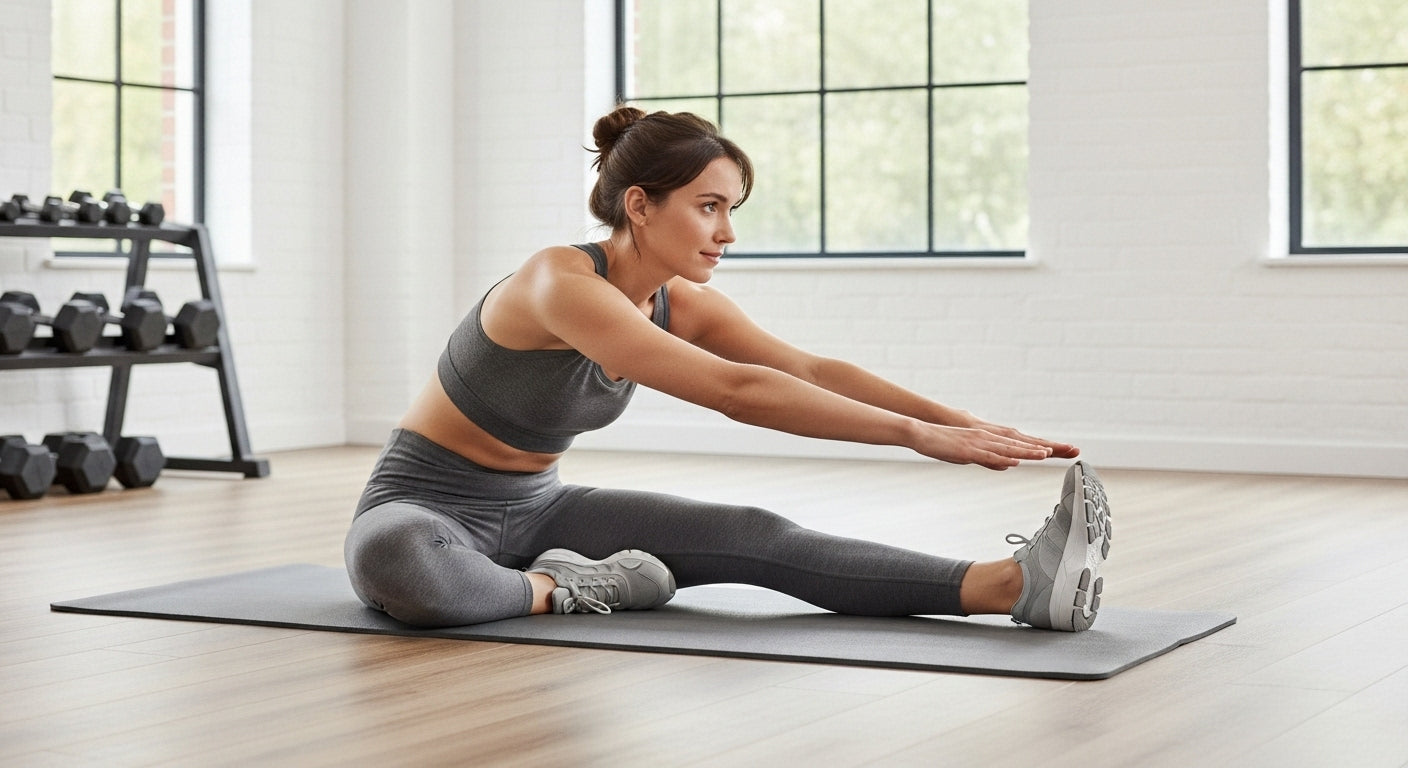



Leave a comment
All comments are moderated before being published.
This site is protected by hCaptcha and the hCaptcha Privacy Policy and Terms of Service apply.